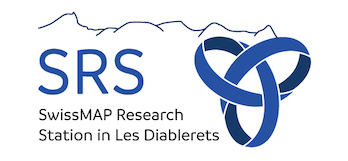Speaker
Description
The discovery of emergent gauge theories in condensed matter systems is associated with novel phenomena such as fractionalization and topological excitations. A prime example are spin ice compounds, which are materials hosting a ground state described by an emergent U(1) gauge theory, featuring monopole excitations arising from the fractionalization of microscopic spin degrees of freedom. Remarkably, signatures of the gauge structure are visible in neutron scattering measurements as pinch-point singularities. Recently, classical spin liquids on the pyrochlore lattice have been proposed with a higher-rank gauge structure, where instead of a conventional gauge field the low- energy physics is described by fluctuations of a tensor field with a continuous gauge freedom. The corresponding classical correlations show variations of the conventional pinch-point singularities, such as pinch-lines or multi-fold pinch-points. Here, we investigate the effect of quantum fluctuations on these signatures using a state-of-the-art implementation of the pseudo-fermion functional renormalization group approach. We observe a significant modification of the signal drastically different from the simple broadening due to thermal fluctuations, highlighting the importance of quantum fluctuations in possible material realizations and interpretation of experimental observations.

